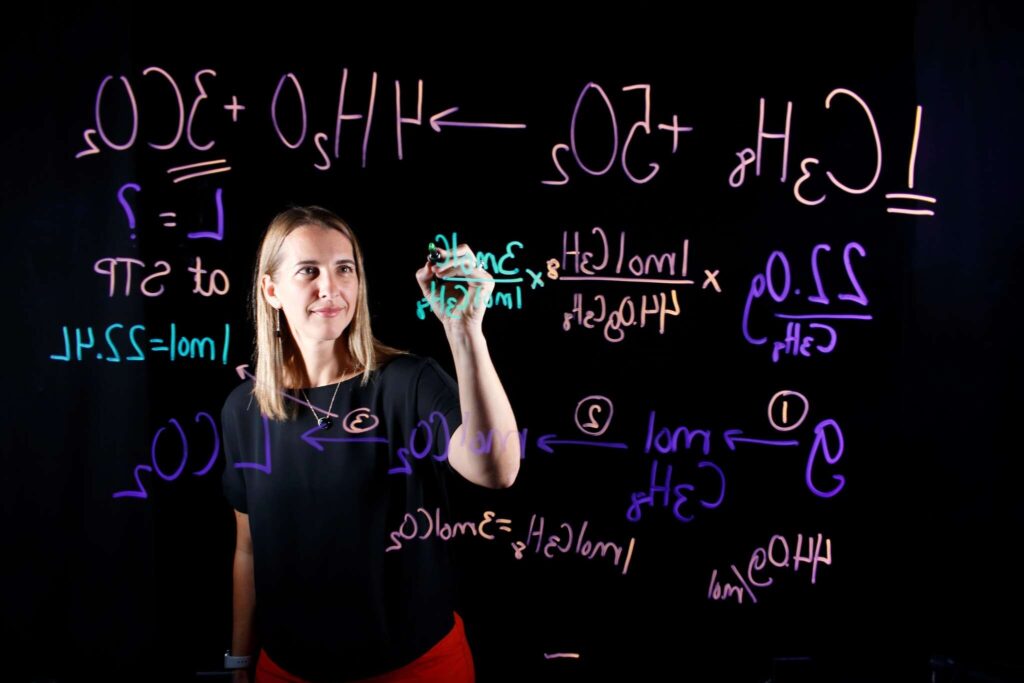How Raising the Difficulty of Exams Boosted Grades by 8%
86%
Average exam score compared to 78% prior to using Top Hat
50
Number of exam questions administered
45
students enrolled in two course sections

The Challenge
Falling attendance rates and exam scores
Like many educators, David Guggenheim had noticed some concerning trends among his students during the 2020–2021 academic year. To start, fewer students were attending his Business Analytics class. “In fall 2021, I experienced the highest levels of absenteeism I’d ever seen. Over the course of the semester, I didn’t have one single student come to office hours,” shares Guggenheim, Teaching Assistant Professor of Business Administration at the University of Illinois, Urbana-Champaign.
Unsurprisingly, poor attendance rates began to impact student outcomes, with average exam grades falling compared to previous semesters. In an effort to address challenges around comprehension, Guggenheim decreased the difficulty of his assessments by reducing the number of questions per exam, but his students were still performing below pre-pandemic levels. Also worrying was the fact that nobody was showing up to office hours—struggling students weren’t even bothering to seek help.
To reverse these trends, Guggenheim realized he needed to get students back into the classroom and motivate them to participate. He evaluated a variety of active learning platforms, but ultimately decided that Top Hat would address his challenges with both assessment performance and attendance. His initial goal? Encouraging attendance and engagement during the three hours of class time each week, though Guggenheim hoped he could accomplish something greater: “A movement back towards more difficult tests and assessments with better scores,” he says.
The Solution
Using Top Hat polls and discussions to prepare students for assessments
Guggenheim’s Business Analytics course consists of two sections of 45 students, with one section hosted online and one meeting face-to-face. Prior to using Top Hat, he would lecture for the first half of the class, and for the second half, students would apply their learnings through hands-on coding activities. Students were engaged during the coding portion because the activities were graded. However, the lack of engagement opportunities during lectures meant students often struggled to focus. “The lecture slides contain this critical conceptual material, and if you don’t truly understand this, the activities aren’t going to make much sense,” Guggenheim says.
Starting in the spring 2022 semester, Guggenheim used Top Hat to incentivize attendance and keep his students focused. He asked questions every ten-to-fifteen minutes during lecture and gave students marks for participating and for correctness. Getting a real-time look at responses was a win-win for both Guggenheim and his students. He was able to use insights from poll and discussion data to gauge comprehension and identify struggling students. On the other hand, students were given a chance to better grasp the material before moving on. The act of assigning grades to attendance and lecture questions led to drastic change: “Every single class period has had full attendance, except for students out with illness. And when they come, they’re asking questions and breaking out of their cocoons,” he says.
“For the first time in my teaching career, I had three students get 100 percent on one of my exams.”


The Results
Increased engagement and better exam scores
It was clear to Guggenheim that students were engaging more in class. The bigger question: would greater participation translate to better performance? He administers two written exams in his course. In fall 2021, his students averaged 78 percent on his exams. After implementing Top Hat and using questions with the same level of difficulty, he saw the average on his first exam climb to 82 percent in his online section and 86 percent in his face-to-face section. Guggenheim increased the number of questions from 45 to 50 for the second exam, effectively raising the difficulty. Amazingly, he saw the same averages of 82 and 86 percent, respectively, across the two sections. The entire grading curve shifted, with the lowest and highest grades all increasing. “For the first time in my teaching career, I had three students get 100 percent on one of my exams,” he said.
Guggenheim was thrilled with rising exam scores, but he is even more encouraged by the intangible changes he noticed in class. Top Hat has helped pique student curiosity and has allowed him to create a vibrant class environment. In the spring 2022 semester, 34 students showed up to Guggenheim’s office hours and engaged in a lively review session for 2.5 hours. Increased student motivation combined with improved exam scores make Guggenheim confident his students are engaging with course material on a deeper level. “Top Hat isn’t just encouraging engagement; it’s encouraging enthusiasm,” he says.








